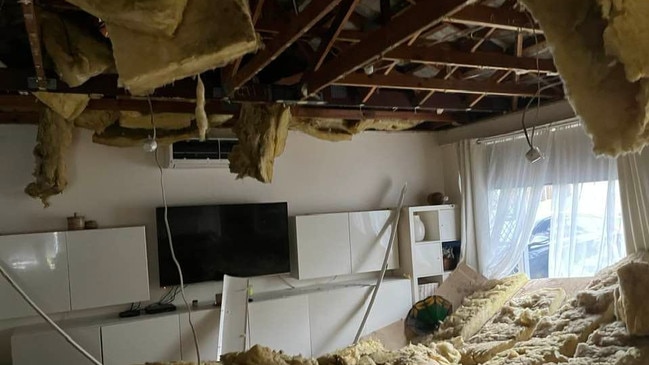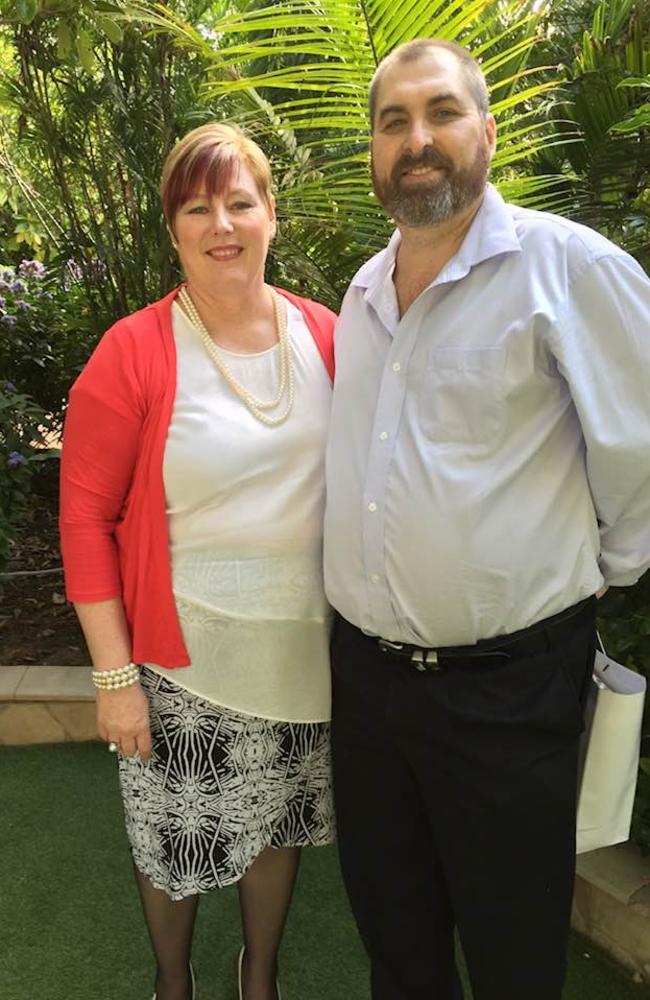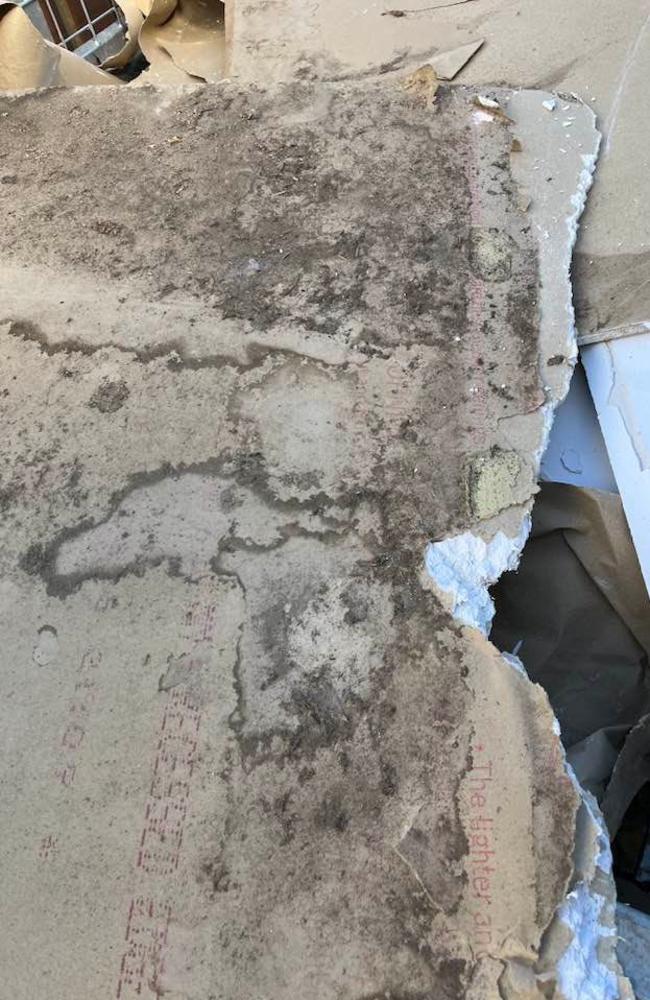RACQ accepts Springfield family’s insurance claim after tangling over roof damage origins
RACQ have now accepted the insurance claim of a Springfield woman who said they missed the obvious signs of water damage when initially inspecting her collapsed roof.
Ipswich
Don't miss out on the headlines from Ipswich. Followed categories will be added to My News.
RACQ initially chalked up a Springfield family’s roof collapse to glue damage, but have since accepted the family’s dispute of the rejected insurance claim for water damage.
Linda Jones said she was at home a few weeks ago when she heard an “almighty crash” coming from her living room.
The entire ceiling had fallen onto their living room furniture and broken into pieces.
She and her husband guessed that water damage was a likely cause, given the wet weather at the time, but the Make Safe team sent by RACQ said they couldn’t see any obvious damage to the roof.
They did, however, note that there may have been some weather marks on the ceiling close to the collapse.
Ms Jones said when RACQ later sent out an assessor, the man didn’t actually look under the plastic the team had covered the roof with, or at the wreckage that Ms Jones and her husband had moved to their undercover patio.

“I brought to his attention that since the event had happened that I could now also see ripples in the roof which I’ve now found out to be sagging,” said Ms Jones.
She and her husband hired a plasterer to take a look at their ceilings, and he had pointed out the issue to them.
“It looks like now every part of our house has got this sagging in it, which we don’t believe was the case prior to this lounge room ceiling collapsing,” she said.
The plasterer estimated the collapsed and surrounding roof would cost $10,000 to repair, and Ms Jones said that if she has to get the whole roof repaired – which she believes is likely – it could cost upwards of $50,000.
Ms Jones said she communicated to the RACQ assessor that she and her husband had not noticed any sagging prior to the collapse, but that he simply said “well, why would you? You’re not looking at your roof every day.”
Ms Jones maintained that it wouldn’t be unreasonable to think that the collapse may have contributed to the damage, given the force of it falling down and the wind that has since come through.
Soon after the assessor’s visit, RACQ notified Ms Jones that their claim could not be approved because it appeared that there was a glue failure, and that they hadn’t taken the appropriate measures to look after their house.

Ms Jones and her husband are currently in the process of disputing this rejection.
They consulted section 46 of the Insurance Contracts Act – which states that if you were unaware of the defect when entering your insurance contract – and that a “a reasonable person in the circumstances could not be expected to have been aware” – then the insurance company cannot refuse the claim.
“What’s ‘reasonable’ to me and my husband is clearly not reasonable to RACQ,” said Ms Jones.
“We’re not tradespeople, we don’t recall there being any significant damage that to our mind that we understood it to be – because sagging to me and my husband it where your roof is actually bowing down … but it’s not the case in the building industry, as we’ve since found out.”
Ms Jones also said the assessor’s report contained a number of inaccuracies – including stating that their house, which was built in the late 90s, was 50 years old.
The report also said the original team sent by RACQ had cleared the wreckage, but Ms Jones and her husband had been the ones to initially move it out of the living room – and to later take it to the tip.
“We left it as long as we could, and then when RACQ disallowed the claim we just thought ‘well we need to clean it because it’s becoming a health hazard’,” recounted Ms Jones.
“We didn’t want any more fibres getting around. My husband and I are both ex-defence veterans and he has some health issues – plus we have a son with autism and it was already very disruptive to him as well.”
“We kind of just wanted to get back to some sense of normality.”
When they were going through the wreckage, however, Ms Jones found three pieces of ceiling with watermarks on it.
“RACQ said there was no signs of water damage, and clearly we found that,” she said.

Ms Jones said she doesn’t dispute that there may have been some evidence of a glue issue, but that RACQ had previously looked at their garage roof – which is next to their living room – and did not notify them of any issue then.
“Our question is, if the ceilings were faulty, then surely something should have been said to us.”
Further, Ms Jones noted that the significant rain and hail in Springfield over the last few years would have to have had some impact or trauma to the house.
She said the Make Safe team that initially came out had “confirmed, with the amount of rain that our area had experienced within the last probably two years more recently, it could have been a build-up of weather events over the years, and then finally it’s just caused the roof to collapse.”
Further, her friend’s son who works in the building industry recently examined their roof and noticed there was some minor chipping from potential hail damage, and also a crack that the water may have gotten through – which the Make Safe Team did not identify.
“I don’t know if when they come to do their checks they’re doing them well enough,” said Ms Jones.
“We’re getting two sets of information from the two assessors that came out from RACQ … One’s telling us ‘yeah it could’ve been a build-up over the years that’s just caused it to collapse’ and then the assessor, who didn’t even bother to look inside the plastic.”
Ms Jones said she raised this last concern with RACQ, but they said it was a potential hazard for the assessor to look under the plastic.
“How can they do a proper check if they didn’t look at the evidence, they didn’t look at inside the roof, or get on top of the roof,” she questioned.
An RACQ spokesperson said they are unable to comment on individual claims.
“RACQ home insurance policies cover flood and storm damage, however a claim may be affected if a member doesn’t keep their home and contents in good condition and don’t take reasonable care to protect them from loss or damage,” they said.
Ms Jones posted about her experience on Facebook, warning others to check their ceilings as “if you’re gonna have this issue, you may not be covered like you think you are.”
She recommended people check their roofs for signs of sagging like nail heads starting to pop through the ceiling.
“Most of Springfield may be having this issue sooner or later, unless they’ve had their roofs replaced recently,” she said.
“I would not want anyone else to have to go through this, but if they have to then they need to note everything down – who they’ve spoken to, and take so many photos.”
RACQ reached out to Ms Jones after this article’s initial publication to discuss her claim further, and have notified her that her claim for the living room damage has now been accepted and that they will conduct a further assessment on the damage to the rest of the house.




